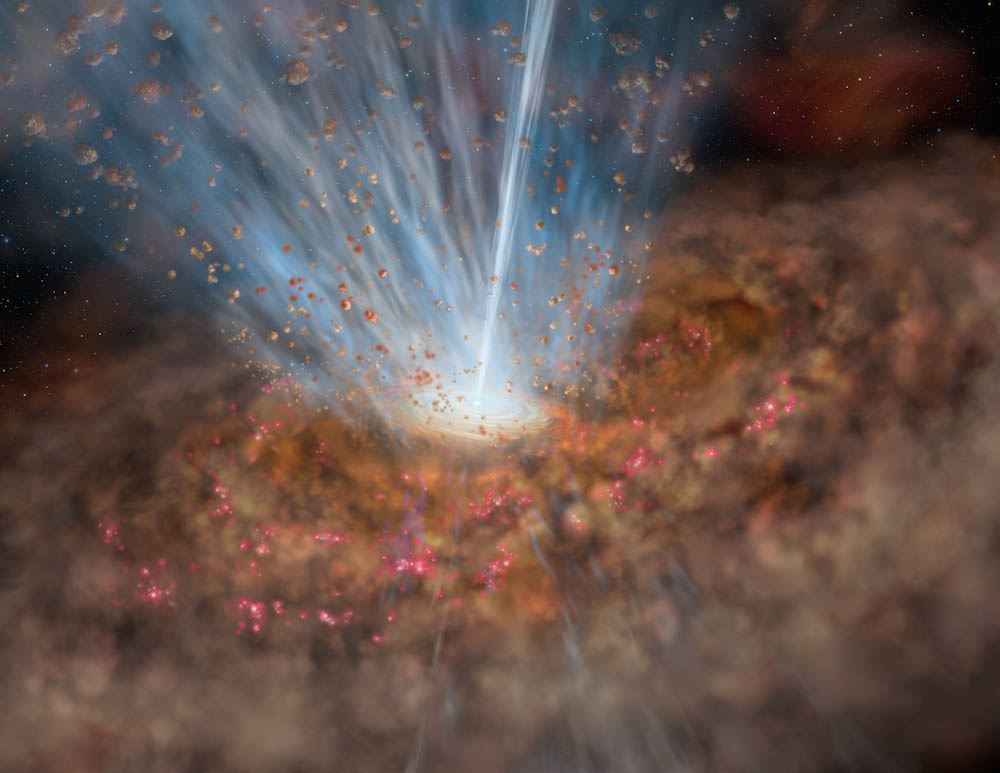Galactic winds driven by active galactic nuclei

Our paper on the physics of galactic winds driven by massive black holes has been published:
Faucher-Giguère, C.-A. & Quataert, E., “The Physics of Galactic Winds Driven by Active Galactic Nuclei,” MNRAS, 425, 605 [arXiv:1204.2547].
In this work, we show that outflows from massive black holes, with launch speed of several thousand km/s or more, are generically in the energy-conserving limit. During the energy-conserving expansion, the momentum of the swept-up gas in the galaxy is boosted, thus providing an explanation for the large momentum fluxes >>L/c that have been recently of galaxy-scale outflows by Herschel, as well as by a number of ground-based telescopes.
We also estimate the emission from shock wind bubbles, including from cosmic rays accelerated at the shocks. We find that shock-accelerated particles can give rises to observable radio and gamma-ray emission. The “Fermi bubbles” observed toward the center of the Milky Way, in particular, may be the result of an epoch ~10 Myr ago when Sgr A* was active and drove a wind into the Galaxy. In addition, a significant fraction of the radio emission that we observe from quasars could originate from this processes rather than radio jets or star formation.